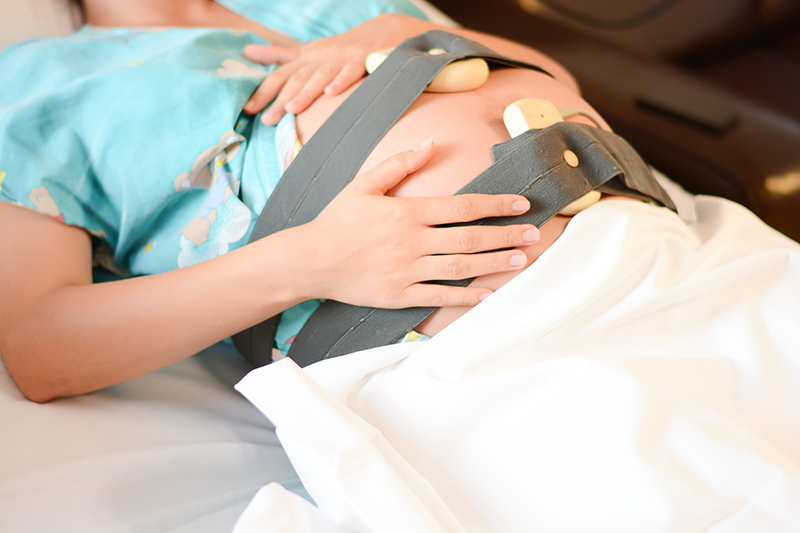Families For Life | Monitoring the Baby During Labour

Why Do You Need Fetal Monitoring During Labour?
When you are in active labour, your womb contracts to move your baby through the birth passage. The strong contractions may also impair the supply of blood and oxygen to your baby. Thus, monitoring of your baby’s condition is essential during this period. Some babies may not be able to handle the stress of labour and your doctor may have to perform a cesarean section delivery.
Monitoring involves measurement of your baby’s heart rate at different phases of the contractions. This monitoring may be performed continuously or intermittently.
Continuous cardiotocography (CTG)
Continuous cardiotocography (CTG) is the most common method used in Singapore. Two transducers are attached via soft straps around the women’s tummy. One transducer monitors the baby’s heart rate while the other records contractions.
CTG is advantageous as it detects abnormalities in fetal heart beat patterns early so that appropriate measures can be taken if necessary. The main disadvantage, however, is that the woman is “bed-bound”. Occasionally, the transducer at the tummy may not be sensitive to pick up the heart rate well. Your doctor may insert a fetal scalp electrode (FSE) to enhance pick up of the baby’s heart rate. FSE is a thin tubular device inserted via the vagina to be applied onto the scalp of the baby’s head.
There is usually no pain during the insertion (similar to a vaginal examination). The electrode will leave no permanent marks or injuries on your baby’s head.
Fetal scalp blood sampling (FBS)
Sometimes, CTG trace may raise suspicions about your baby’s condition. The doctor may perform a fetal blood sample to confirm the oxygenation status. In this procedure, the woman lies on her side and a vaginal examination is performed so that a tiny amount of blood can be collected from the scalp of the baby. This is analysed by a blood gas machine. If the results are normal, labour can be allowed to progress and the process may be repeated again later. If the results are not reassuring, the delivery will be expedited either with a cesarean section or an instrumental delivery.
Some may experience discomfort during the procedure, particularly as it may be repeated more than once. Many birth centres do not routinely practise this.
Meconium/blood-stained liquor and its implications
The liquor (amniotic fluid) is monitored throughout the labour. Thick meconium staining liquor indicates that the baby has passed motion inside the mother’s womb. This could be associated with fetal distress and the doctor may expedite delivery. There is also a worry that the baby may aspirate (breathe in) the meconium stained liquor, resulting in lung infection and injury.
If the liquor is heavily blood stained, premature separation of the placenta (placenta abruption) needs to be excluded. With premature separation of the placenta, there is an abrupt “cut off” of oxygen supply to the baby and immediate delivery is required.
What is intermittent monitoring?
In intermittent monitoring, the midwife uses a Doptone device to measure the baby’s heart rate at fixed intervals (every 15 minutes), around the contraction cycle. Contractions are easily felt and the midwife monitors the duration and timing of contractions in relation with the fetal heart rate.
This is commonly practised either before labour is established or in the early latent phase.
A Healthy Baby in Mind
It must be borne in mind that these monitoring techniques are all minimally invasive, in order to be safe for the baby. As a result of the “indirect” nature of these techniques, none of them are perfect.
The clinical decisions of the medical and nursing team, based on these monitoring techniques aim to ensure safety of your baby during labour and delivery. After all, delivery is often hailed as the most treacherous journey of our lives and these monitoring devices are safety road marks along the journey.
Explore more
By Dr TAN Thiam Chye, Dr TAN Kim Teng, Dr TAN Heng Hao, Dr TEE Chee Seng John,
KK Women’s and Children’s Hospital
Sources:
The New Art and Science of Pregnancy and Childbirth, World Scientific 2008.
Copyright © 2023 HealthHub.sg. All rights reserved.